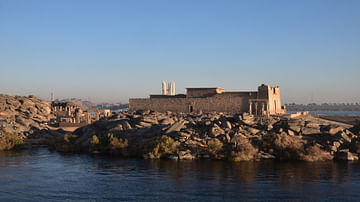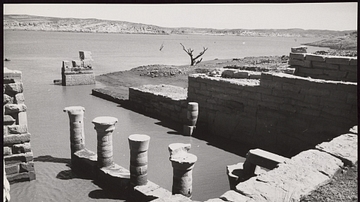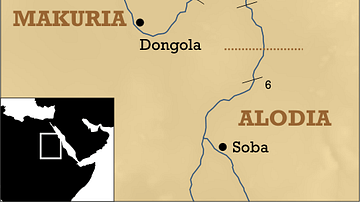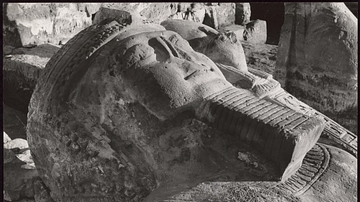Illustration
The Kiosk of Qertassi is a small but elegant Roman kiosk with four lotus-headed columns inside and two Hathor pillars at the entrance. It dates to the early Roman period (1st century CE) and resembles the Kiosk of Trajan in Philae. The monument was originally located approximately 50 kilometres (31 mi) south of Aswan in Southern Egypt (Lower Nubia). It was moved to the site of New Kalabsha by the Egyptian Antiquities Service as part of the incredible International Campaign for the Safeguard of the Monuments of Nubia launched in the early 1960s by UNESCO.
About the Author
Cite This Work
APA Style
Raddato, C. (2022, March 12). Kiosk of Qertassi, New Kalabsha. World History Encyclopedia. Retrieved from https://www.worldhistory.org/image/15394/kiosk-of-qertassi-new-kalabsha/
Chicago Style
Raddato, Carole. "Kiosk of Qertassi, New Kalabsha." World History Encyclopedia. Last modified March 12, 2022. https://www.worldhistory.org/image/15394/kiosk-of-qertassi-new-kalabsha/.
MLA Style
Raddato, Carole. "Kiosk of Qertassi, New Kalabsha." World History Encyclopedia. World History Encyclopedia, 12 Mar 2022. Web. 12 Apr 2025.









